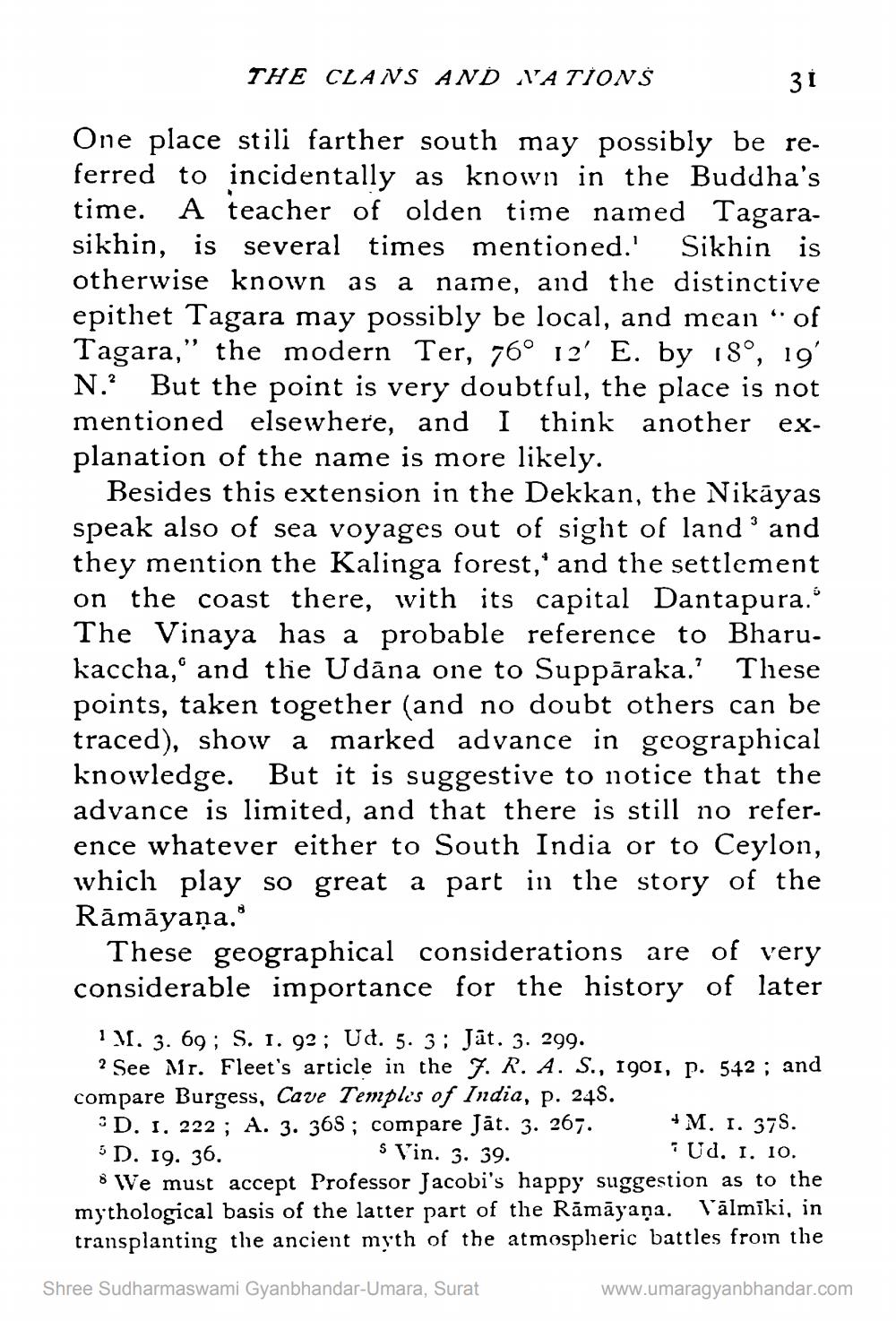________________
THE CLANS AND VATIONS
31
One place stili farther south may possibly be referred to incidentally as known in the Buddha's time. A teacher of olden time named Tagarasikhin, is several times mentioned.' Sikhin is otherwise known as a name, and the distinctive epithet Tagara may possibly be local, and mean "of Tagara," the modern Ter, 76° 12' E. by 18°, 19 N. But the point is very doubtful, the place is not mentioned elsewhere, and I think another explanation of the name is more likely.
Besides this extension in the Dekkan, the Nikāyas speak also of sea voyages out of sight of land ' and they mention the Kalinga forest,' and the settlement on the coast there, with its capital Dantapura." The Vinaya has a probable reference to Bharu. kaccha,' and the Udāna one to Suppāraka.” These points, taken together (and no doubt others can be traced), show a marked advance in geographical knowledge. But it is suggestive to notice that the advance is limited, and that there is still no reference whatever either to South India or to Ceylon, which play so great a part in the story of the Rāmāyaṇa.
These geographical considerations are of very considerable importance for the history of later TM. 3. 69 ; S. 1. 92; Ud. 5. 3: Jāt. 3. 299.
2 See Mr. Fleet's article in the 7. R. A. S., 1901, p. 542; and compare Burgess, Cave Temples of India, p. 248.
· D. I. 222; A. 3. 368 ; compare Jät. 3. 267. M. 1. 375. 5 D. 19. 36. S Vin. 3. 39.
. Ud. I. 10. 8 We must accept Professor Jacobi's happy suggestion as to the mythological basis of the latter part of the Rāmāyaṇa. Vālmīki, in transplanting the ancient myth of the atmospheric battles from the
Shree Sudharmaswami Gyanbhandar-Umara, Surat
www.umaragyanbhandar.com




